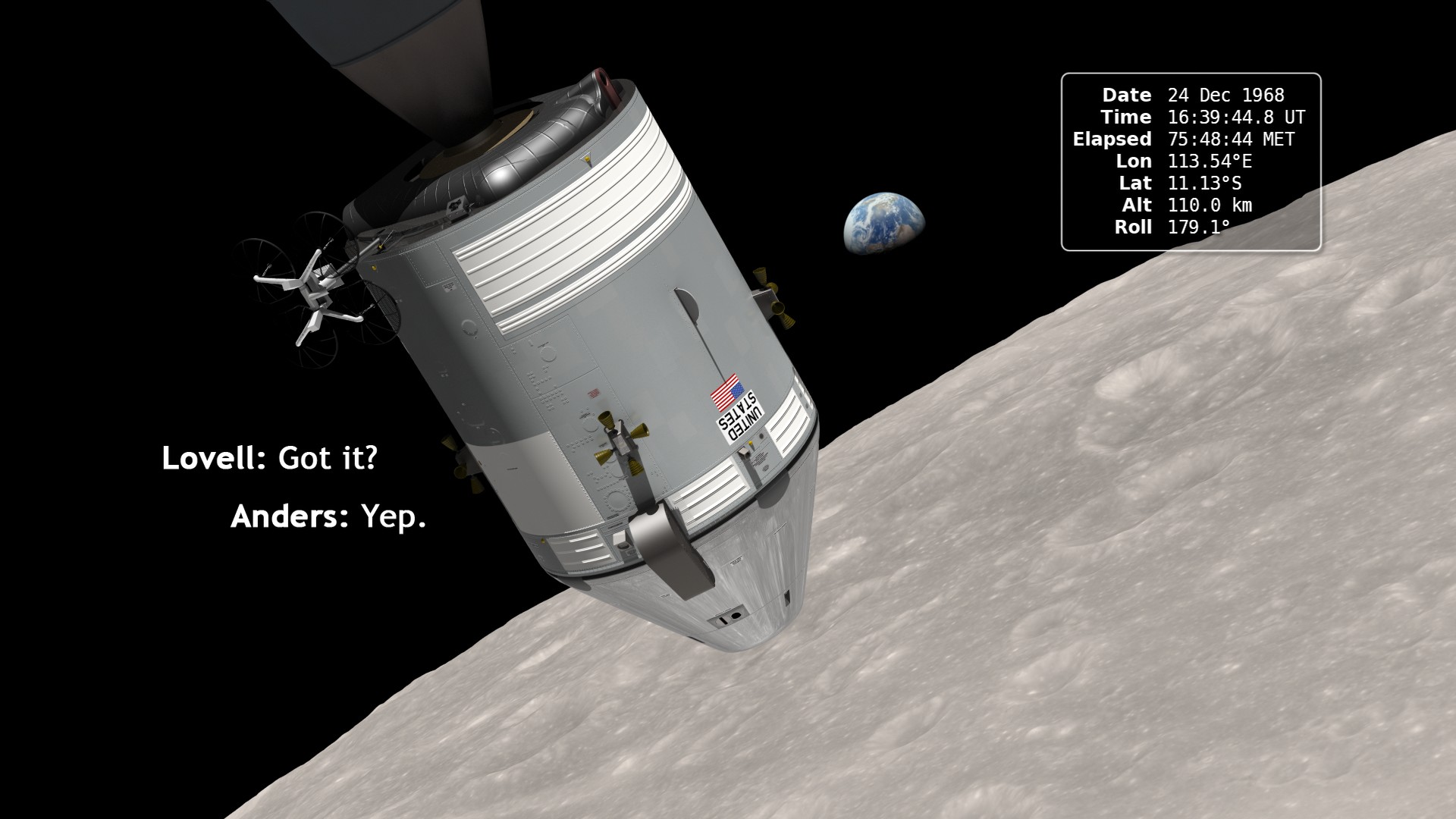Making History
In December 1968, the crew of Apollo 8 became the first humans to orbit the moon. But as NASA astronauts Frank Borman, James Lovell and William Anders all later recalled, the most important thing they discovered in space was Earth. Using data from NASA’s Lunar Reconnaissance Orbiter, the moment when the crew first saw and photographed Earth rising from behind the moon was recreated. The key to the new work is a set of images of the lunar surface captured by a camera mounted in the Apollo 8 Command Module's rendezvous window. By registering each image to a model of the moon’s terrain, the orientation of the spacecraft and window from which each photo of Earth was taken can now be known. Watch the video to learn more.

See how Apollo 8 astronauts captured the iconic Earthrise photo.
Watch this video to find out how the Apollo 8 crew photographed Earth from lunar orbit.

A camera mounted to the Apollo 8 Command Module (above) automatically captured an image of the moon’s surface every 20 seconds.

Apollo 8 images of the moon's surface (black-and-white) were placed over a model of the terrain to determine the orientation of the Command Module.

The Earthrise photo is shown here over a modeled view of the moon.
For More Information
See NASA.gov
Credits
Please give credit for this item to:
NASA's Goddard Space Flight Center
-
Animator
- Ernie Wright (USRA)
-
Video editor
- Dan Gallagher (USRA)
-
Narration
-
Narrator
-
Producers
- Dan Gallagher (USRA)
- Ernie Wright (USRA)
- Andrew Chaikin
- Noah Petro (NASA/GSFC)
-
Scientists
- John Keller (NASA/GSFC)
- Noah Petro (NASA/GSFC)
-
Writer
- Ernie Wright (USRA)
Release date
This page was originally published on Tuesday, January 14, 2014.
This page was last updated on Wednesday, May 3, 2023 at 1:51 PM EDT.
